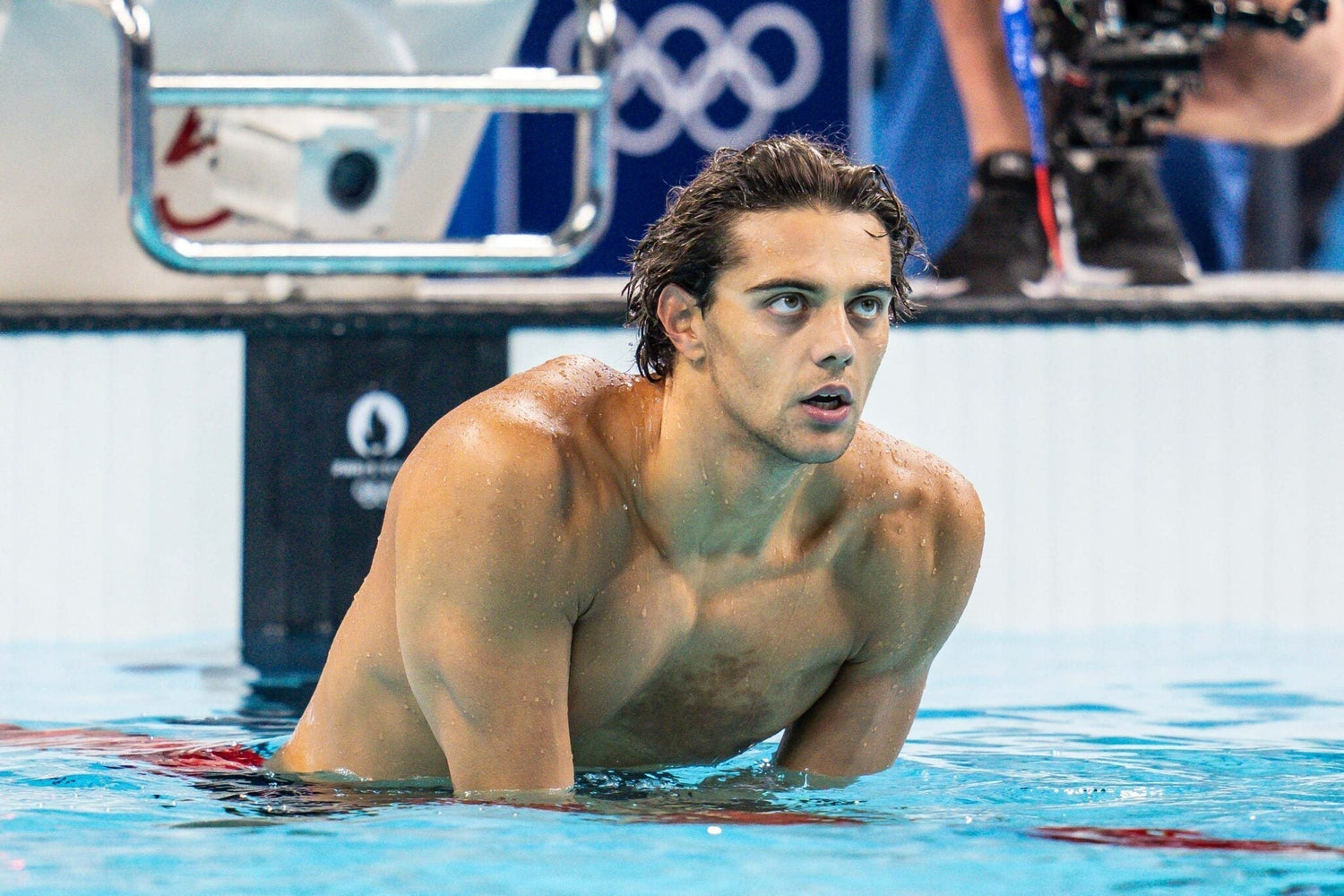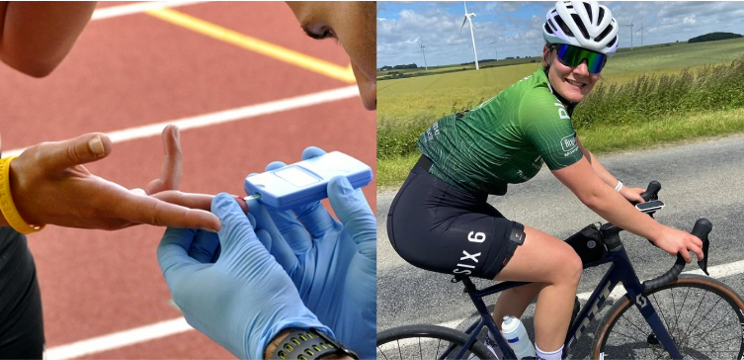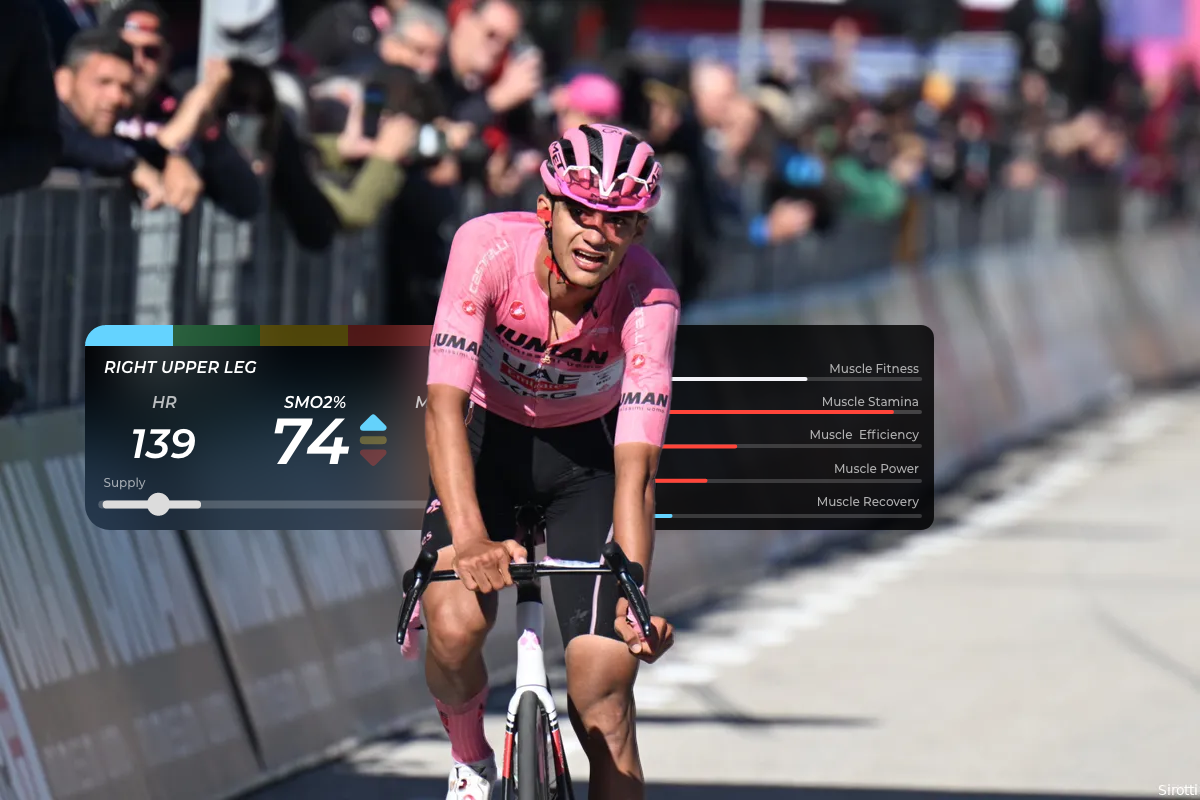A recent study shows that wearable NIRS technology can be used during swimming to assess muscle function in real-time.
Understanding Muscle Function in real training environments
Training for performance is about more than just logging hours in the pool. Understanding how an athlete's body responds to training — especially at the muscle level — can help coaches and athletes make more informed decisions about recovery, adaptation, and progression.
Until recently, measuring muscle function often required lab-based testing or indirect assumptions based on heart rate or perceived effort. But a new study published in Experimental Physiology shows that it's now possible to gather meaningful muscle oxygen data in real-time, during actual swim training, using wearable NIRS technology.
The research used our Train.Red Plus sensor to measure how efficiently swimmers’ muscles used oxygen — a key factor in endurance, recovery, and fatigue resistance.
What the study looked at
The research team studied 28 swimmers, ranging from recreational level to world-class competitors. They focused on the triceps brachii, a primary muscle involved in freestyle swimming. Using the Train.Red sensor, they assessed:
Understanding Muscle Function in real training environments
Training for performance is about more than just logging hours in the pool. Understanding how an athlete's body responds to training — especially at the muscle level — can help coaches and athletes make more informed decisions about recovery, adaptation, and progression.
Until recently, measuring muscle function often required lab-based testing or indirect assumptions based on heart rate or perceived effort. But a new study published in Experimental Physiology shows that it's now possible to gather meaningful muscle oxygen data in real-time, during actual swim training, using wearable NIRS technology.
The research used our Train.Red Plus sensor to measure how efficiently swimmers’ muscles used oxygen — a key factor in endurance, recovery, and fatigue resistance.
What the study looked at
The research team studied 28 swimmers, ranging from recreational level to world-class competitors. They focused on the triceps brachii, a primary muscle involved in freestyle swimming. Using the Train.Red sensor, they assessed:
- Muscle oxidative capacity (kHIGH): How well the muscle uses oxygen during recovery
- Resistance to oxygen diffusion (Δk): How easily oxygen reaches the muscle tissue
These measurements were taken in the water, making this one of the first studies to collect this type of muscle data during actual swimming conditions. Here are the main takeaways from the study:
- Stronger performance linked to better oxygen use: Swimmers with higher performance levels had greater oxidative capacity in their triceps.
- Training volume made a difference: Athletes who swam more each week had higher kHIGH values, indicating better muscle efficiency.
- Oxygen delivery stayed balanced across groups: While oxidative capacity varied, the resistance to oxygen diffusion (Δk) was similar across all swimmers. This suggests that as muscles adapt to training, the body also improves its ability to deliver oxygen effectively.
- The sensor worked reliably in water: Train.Red's device provided consistent, repeatable data during swimming trials.
Why this matters for coaches and athletes
This study supports the idea that muscle oxygen data can be used to support training decisions, not just in a lab, but directly in training sessions. With a tool like Train.Red, coaches and athletes can:
This study supports the idea that muscle oxygen data can be used to support training decisions, not just in a lab, but directly in training sessions. With a tool like Train.Red, coaches and athletes can:
- Track how muscles respond to training over time
- Monitor recovery and readiness between sessions
- Adjust training loads based on real-time feedback
- Identify underperforming or overworked muscle groups
Because the device is wearable and waterproof, it’s suitable for use in the pool, on land, or in the gym — giving flexibility without disrupting normal training routines.
A step towards a more informed training
Every athlete responds to training in their own way. Having access to muscle-level data helps move beyond assumptions and toward more individualized, evidence-based coaching. This study shows that it’s not only possible, it’s practical.
Summary:
A step towards a more informed training
Every athlete responds to training in their own way. Having access to muscle-level data helps move beyond assumptions and toward more individualized, evidence-based coaching. This study shows that it’s not only possible, it’s practical.
Summary:
- Muscle oxidative capacity was higher in elite swimmers
- Train.Red’s sensor was used successfully during swimming sessions
- Data can help guide training decisions, not just research
- NIRS offers a new way to monitor muscle performance and adaptation in real-world settings
Study reference:
Villanova et al. (2025) – Oxidative and O₂ Diffusive Function in Triceps Brachii of Recreational to World Class Swimmers, Experimental Physiology
Want to learn how to use Train.Red in your training environment?
Contact us to schedule a demo or speak with our performance team.
Villanova et al. (2025) – Oxidative and O₂ Diffusive Function in Triceps Brachii of Recreational to World Class Swimmers, Experimental Physiology
Want to learn how to use Train.Red in your training environment?
Contact us to schedule a demo or speak with our performance team.



